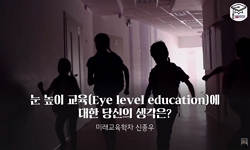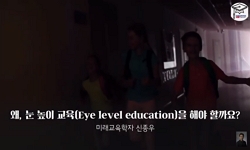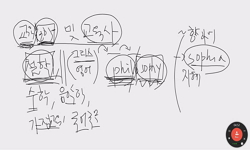The purpose of this study is to propose a learner-centered efficient education method based on the ‘experience of learners’ by applying facilitation techniques to the education of design and production of musical stage costumes. The research metho...
http://chineseinput.net/에서 pinyin(병음)방식으로 중국어를 변환할 수 있습니다.
변환된 중국어를 복사하여 사용하시면 됩니다.
- 中文 을 입력하시려면 zhongwen을 입력하시고 space를누르시면됩니다.
- 北京 을 입력하시려면 beijing을 입력하시고 space를 누르시면 됩니다.

퍼실리테이션(Facilitation)에 기반을 둔 뮤지컬의상 디자인 및 제작 교육 = An Education on Design and Production of Musical Stage Costumes Based on Facilitation
한글로보기부가정보
다국어 초록 (Multilingual Abstract)
First, the teacher explained to the students the concept of facilitation in detail before offering classes using various kinds of facilitation tools.
Second, the teacher listened to the students carefully as a facilitator and asked effective questions to tap their potential capability.
Third, in general, the students were more satisfied with the teaching method using facilitation than the existing teaching method. In screenplay analysis, the students were highly satisfied with their learning when they participated in a Brainstorming session and used a Rich Picture. In the process of cloth cutting and sewing, the students were very satisfied with the pair work done together with their partners.
Fourth, it was found out that the teaching method using facilitation tools can increase the degree of students’ participation in the class, help the students solve a given problem through teamwork, and enhance students’ understanding of the contents of study and the level of concentration by actively acquiring the knowledge and skills necessary for problem solving.
The following are the suggestions for continuous development and application of the education on design and production of musical stage costumes using facilitation.
First, the student-centered teaching method based on facilitation needs relatively more teaching hours than the teacher-centered teaching method as there are more courses that require interaction among students. Thus, it is necessary for both the teacher and the students to adjust the teaching and learning load in order to finish the given volume of learning and assignments during limited class hours.
Second, the teacher should promote smooth communication among the team members by offering counseling time for each team to evaluate and understand well one another during non-class times so that the team members could communicate well among them.
Third, the one-to-one interviews in this study were conducted after class to hear students’ opinions in detail. However, this method does not guarantee anonymity. Thus, in-depth thoughts of students could be grasped if observation method and survey method are used together for collection of students’ opinions.
Fourth, if the education using facilitation is conducted continuously in the education area related to performing arts costumes, it will be of help to the development of education methods in related areas through accumulation of objective data necessary for confirmation of the educational use of facilitation and the scope of its application.
The purpose of this study is to propose a learner-centered efficient education method based on the ‘experience of learners’ by applying facilitation techniques to the education of design and production of musical stage costumes. The research method used was a case study based on domestic and international papers, books and Internet materials. The case of research was a subject related to the design and production of costumes for musical at a university in Seoul in the School of Performing Arts. The teacher participated in the course as a teacher and a facilitator and conducted a one-to-one interview with the learner after the completion of the course. The following are the research results.
First, the teacher explained to the students the concept of facilitation in detail before offering classes using various kinds of facilitation tools.
Second, the teacher listened to the students carefully as a facilitator and asked effective questions to tap their potential capability.
Third, in general, the students were more satisfied with the teaching method using facilitation than the existing teaching method. In screenplay analysis, the students were highly satisfied with their learning when they participated in a Brainstorming session and used a Rich Picture. In the process of cloth cutting and sewing, the students were very satisfied with the pair work done together with their partners.
Fourth, it was found out that the teaching method using facilitation tools can increase the degree of students’ participation in the class, help the students solve a given problem through teamwork, and enhance students’ understanding of the contents of study and the level of concentration by actively acquiring the knowledge and skills necessary for problem solving.
The following are the suggestions for continuous development and application of the education on design and production of musical stage costumes using facilitation.
First, the student-centered teaching method based on facilitation needs relatively more teaching hours than the teacher-centered teaching method as there are more courses that require interaction among students. Thus, it is necessary for both the teacher and the students to adjust the teaching and learning load in order to finish the given volume of learning and assignments during limited class hours.
Second, the teacher should promote smooth communication among the team members by offering counseling time for each team to evaluate and understand well one another during non-class times so that the team members could communicate well among them.
Third, the one-to-one interviews in this study were conducted after class to hear students’ opinions in detail. However, this method does not guarantee anonymity. Thus, in-depth thoughts of students could be grasped if observation method and survey method are used together for collection of students’ opinions.
Fourth, if the education using facilitation is conducted continuously in the education area related to performing arts costumes, it will be of help to the development of education methods in related areas through accumulation of objective data necessary for confirmation of the educational use of facilitation and the scope of its application.
국문 초록 (Abstract)
첫째, 교수자는 학습자들에게 퍼실리테이션의 개념을 자세히 설명한 후, 다양한 퍼실리테이션 도구를 활용하여 수업을 진행하였다.
둘째, 교수자는 퍼실리테이터가 되어 학습자들의 의견을 경청하고 이들의 역량을 이끌어낼 수 있는 효과적인 질문을 하였다.
셋째, 학습자들은 전반적으로 기존의 수업방식보다퍼실리테이션을 적용한 수업방식에 만족하였다. 대본분석 과정에서는 브레인스토밍과 리치픽쳐를 사용하는 경우 학습에 대한 만족도가 높았다. 재단 및 봉제과정에서는 짝활동에 대한 만족도가 높았다.
넷째, 퍼실리테이션의 도구를 활용한 수업방식은 학습자들의 수업참여도를 높여주고 팀워크를 통해 주어진 문제를 스스로 해결하고 문제해결에 필요한 지식과 기술을 능동적으로 습득함으로써 학습내용에 대한이해도와 집중도를 높여주는 것으로 나타났다.
퍼실리테이션을 적용한 뮤지컬의상 디자인 및 제작교육의 지속적인 개발과 적용을 위한 제언은 다음과같다.
첫째, 퍼실리테이션에 기반을 둔 학습자 중심의 수업 방식은 교수자 중심의 수업 방식보다 학습자들 간의 상호 활동을 이끌어내는 과정이 많아 상대적으로많은 수업시간이 필요하다. 그러므로 교수자와 학습자들 모두 한정된 수업시간 동안 주어진 학습량과 과제를 진행하기 위해 수업량을 조절할 필요가 있다.
둘째, 교수자는 학습자들이 수업 이외의 시간을 가질 수 있게 하여, 팀 구성원들이 원활하게 의사소통하면서 적극적으로 팀 활동에 참여할 수 있도록 한다.
셋째, 본 연구에서는 학습자와 1:1 면접을 시행하였다. 그러나 이러한 방법은 익명성이 보장되지 않으므로관찰법을 병행하여 학습자들의 의견을 수렴한다면 좀더 심도 있는 학습자들의 생각을 얻을 수 있을 것이다.
넷째, 공연예술의상 관련 교육 분야 및 패션디자인교육, 타 전공 교육에서 지속적으로 퍼실리테이션을적용한 교육을 진행한다면 퍼실리테이션의 교육적 활용도 및 적용 범위를 확인할 수 있고 객관적인 자료가 축적되어 관련 분야의 교육방법을 개발하는 데 도움이 될 것이다.
본 연구의 목적은 퍼실리테이션(Facilitation) 기법을뮤지컬의상의 디자인 및 제작 교육에 적용시켜 ‘학습자의 경험’에 기반을 둔 학습자 중심의 효율적인 교육방법을 제안하는 것이다. 연구...
본 연구의 목적은 퍼실리테이션(Facilitation) 기법을뮤지컬의상의 디자인 및 제작 교육에 적용시켜 ‘학습자의 경험’에 기반을 둔 학습자 중심의 효율적인 교육방법을 제안하는 것이다. 연구방법은 국내⋅외 논문, 단행본, 인터넷 자료 등을 토대로 한 사례연구로 진행하였다. 연구 사례는 서울 소재 대학교의 공연예술학부에서 진행된 뮤지컬을 위한 의상 디자인 및 제작관련 교과목으로 설정하였다. 연구자는 이 교과목의교수자이자 퍼실리테이터로 참여하고 학습과정 종료후 학습자와 1:1 면접을 진행하였다. 연구의 결과는다음과 같다.
첫째, 교수자는 학습자들에게 퍼실리테이션의 개념을 자세히 설명한 후, 다양한 퍼실리테이션 도구를 활용하여 수업을 진행하였다.
둘째, 교수자는 퍼실리테이터가 되어 학습자들의 의견을 경청하고 이들의 역량을 이끌어낼 수 있는 효과적인 질문을 하였다.
셋째, 학습자들은 전반적으로 기존의 수업방식보다퍼실리테이션을 적용한 수업방식에 만족하였다. 대본분석 과정에서는 브레인스토밍과 리치픽쳐를 사용하는 경우 학습에 대한 만족도가 높았다. 재단 및 봉제과정에서는 짝활동에 대한 만족도가 높았다.
넷째, 퍼실리테이션의 도구를 활용한 수업방식은 학습자들의 수업참여도를 높여주고 팀워크를 통해 주어진 문제를 스스로 해결하고 문제해결에 필요한 지식과 기술을 능동적으로 습득함으로써 학습내용에 대한이해도와 집중도를 높여주는 것으로 나타났다.
퍼실리테이션을 적용한 뮤지컬의상 디자인 및 제작교육의 지속적인 개발과 적용을 위한 제언은 다음과같다.
첫째, 퍼실리테이션에 기반을 둔 학습자 중심의 수업 방식은 교수자 중심의 수업 방식보다 학습자들 간의 상호 활동을 이끌어내는 과정이 많아 상대적으로많은 수업시간이 필요하다. 그러므로 교수자와 학습자들 모두 한정된 수업시간 동안 주어진 학습량과 과제를 진행하기 위해 수업량을 조절할 필요가 있다.
둘째, 교수자는 학습자들이 수업 이외의 시간을 가질 수 있게 하여, 팀 구성원들이 원활하게 의사소통하면서 적극적으로 팀 활동에 참여할 수 있도록 한다.
셋째, 본 연구에서는 학습자와 1:1 면접을 시행하였다. 그러나 이러한 방법은 익명성이 보장되지 않으므로관찰법을 병행하여 학습자들의 의견을 수렴한다면 좀더 심도 있는 학습자들의 생각을 얻을 수 있을 것이다.
넷째, 공연예술의상 관련 교육 분야 및 패션디자인교육, 타 전공 교육에서 지속적으로 퍼실리테이션을적용한 교육을 진행한다면 퍼실리테이션의 교육적 활용도 및 적용 범위를 확인할 수 있고 객관적인 자료가 축적되어 관련 분야의 교육방법을 개발하는 데 도움이 될 것이다.
참고문헌 (Reference)
1 김종남, "회의 없는 조직" 플랜비디자인 2016
2 오우식, "퍼실리테이션槪論" 조명문화사 2017
3 송선정, "퍼실리테이션 기법을 활용한 독서토론식 한국어통합 교수 모형 연구" 배재대학교 2017
4 배성의, "퍼실리테이션 기법에 의한 마을 발전계획수립방안" 2013 (2013): 2013
5 반영운, "퍼실리테이션 기반 주민참여 도시재생 워크샵이 주민역량강화에 미치는 영향분석" 2015
6 권기술, "팀조직내 회의 주재 리더의 퍼실리테이션 역량이 팀공유감과 팀학습활동을 통해 팀학습유효성에 미치는 영향" 숭실대학교 대학원 2011
7 강인애, "융복합수업모형으로서의 PBL(Problem-Based Learning) : 대학교양미술 수업사례를 중심으로" 한국콘텐츠학회 15 (15): 635-657, 2015
8 구기욱, "반영조직" 쿠퍼북스 2016
9 범서희, "뮤지컬 '지킬 앤 하이드'에 나타난 무대의상 디자인 연구 - 선과 악의 캐릭터를 중심으로 -" 한국복식학회 60 (60): 45-57, 2010
10 장혜숙, "무대의상디자인" 연극과 인간 2018
1 김종남, "회의 없는 조직" 플랜비디자인 2016
2 오우식, "퍼실리테이션槪論" 조명문화사 2017
3 송선정, "퍼실리테이션 기법을 활용한 독서토론식 한국어통합 교수 모형 연구" 배재대학교 2017
4 배성의, "퍼실리테이션 기법에 의한 마을 발전계획수립방안" 2013 (2013): 2013
5 반영운, "퍼실리테이션 기반 주민참여 도시재생 워크샵이 주민역량강화에 미치는 영향분석" 2015
6 권기술, "팀조직내 회의 주재 리더의 퍼실리테이션 역량이 팀공유감과 팀학습활동을 통해 팀학습유효성에 미치는 영향" 숭실대학교 대학원 2011
7 강인애, "융복합수업모형으로서의 PBL(Problem-Based Learning) : 대학교양미술 수업사례를 중심으로" 한국콘텐츠학회 15 (15): 635-657, 2015
8 구기욱, "반영조직" 쿠퍼북스 2016
9 범서희, "뮤지컬 '지킬 앤 하이드'에 나타난 무대의상 디자인 연구 - 선과 악의 캐릭터를 중심으로 -" 한국복식학회 60 (60): 45-57, 2010
10 장혜숙, "무대의상디자인" 연극과 인간 2018
11 최미나, "대학 모바일러닝 수강의향에 영향을 주는 수강동기에 관한 연구" 한국교육정보미디어학회 20 (20): 77-95, 2014
12 서영진, "교육 콘텐츠 영상을 활용한 플립러닝 강의 도입 및 운영에 관한 연구" 한국교양교육학회 13 (13): 331-348, 2019
13 Reich, P. B., "The World Wide ‘Fast-Show’ Plant Economics Spectrum: A Traits Manifesto" 102 (102): 2014
동일학술지(권/호) 다른 논문
-
지역체육대회 이미지 제고를 위한 엠블럼 개발 -도민체전을 중심으로-
- 한국디자인문화학회
- 권윤경
- 2019
- KCI등재
-
- 한국디자인문화학회
- 김가람
- 2019
- KCI등재
-
1인미디어 사례분석을 통한 커뮤니케이션디자인 방향 연구 -유튜브 채널디자인을 중심으로-
- 한국디자인문화학회
- 김정연
- 2019
- KCI등재
-
- 한국디자인문화학회
- 김건우
- 2019
- KCI등재
분석정보
인용정보 인용지수 설명보기
학술지 이력
| 연월일 | 이력구분 | 이력상세 | 등재구분 |
|---|---|---|---|
| 2026 | 평가예정 | 재인증평가 신청대상 (재인증) | |
| 2020-01-01 | 평가 | 등재학술지 유지 (재인증) |  |
| 2017-01-01 | 평가 | 등재학술지 유지 (계속평가) |  |
| 2013-01-01 | 평가 | 등재학술지 유지 (등재유지) |  |
| 2010-01-01 | 평가 | 등재학술지 유지 (등재유지) |  |
| 2007-01-01 | 평가 | 등재학술지 선정 (등재후보2차) |  |
| 2006-01-01 | 평가 | 등재후보 1차 PASS (등재후보1차) |  |
| 2004-01-01 | 평가 | 등재후보학술지 선정 (신규평가) |  |
학술지 인용정보
| 기준연도 | WOS-KCI 통합IF(2년) | KCIF(2년) | KCIF(3년) |
|---|---|---|---|
| 2016 | 0.6 | 0.6 | 0.54 |
| KCIF(4년) | KCIF(5년) | 중심성지수(3년) | 즉시성지수 |
| 0.52 | 0.5 | 0.732 | 0.06 |




 DBpia
DBpia






